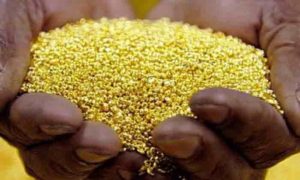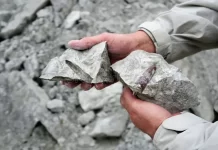
What Is Gold Mining?
Gold mining is the mining resource that extracts gold.
How Is Gold Mined?
Gold is mined using four different methods. Placer mining, hard rock mining, byproduct mining and by processing gold ore.
Placer mining
Placer mining is the technique of extracting gold accumulated in a placer deposit. Placer deposits are composed of relatively loose material that makes tunneling difficult, so most extraction methods involve water or dredging.
Panning
Gold panning is mainly a manual gold separation technique from other materials. Large, shallow pans are filled with gold-containing sand and gravel. The pan is submerged and shaken in water, sorting the gravel gold and other material. It quickly settles down to the bottom of the pan as gold is much denser than rock.
Usually the panning material is removed from stream beds, often at the inside turn in the stream, or from the stream’s bedrock shelf, where gold density allows it to concentrate, a type called placer deposits.
Sluicing
It has long been a very common practice for prospecting and small-scale mining to use a sluice box to extract gold from placer deposits. Essentially, a sluice box is a man-made channel with riffles at the bottom. In order to allow gold to drop out of suspension, the riffles are designed to create dead zones.
In order to channel water flow, the box is placed in the stream. At the top of the box is placed gold-bearing material. The material is transported by the current through the volt where behind the riffles settles gold and other dense material. Less dense material flows like tailings out of the box.
Dredging
While this method has been largely replaced by modern methods, small-scale miners use suction dredges to make some dredging. Small machines that float on the water are typically operated by one or two people. A suction dredge consists of a pontoon-supported sluice box attached to a suction hose controlled by an underwater miner.
State dredging permits specify a seasonal time period and area closures in many of the U.S. gold dredging areas to avoid conflicts between dredgers and fish populations spawning time. Some states, like Montana, need a comprehensive licensing procedure, including U.S. permits. Engineering corps, Montana Environmental Quality Department and local county water quality boards.
Rocker box
Also called a cradle, it uses riffles to trap gold similarly to the sluice box in a high-walled box. A rocker box uses less water than a sluice box and is suitable for areas with limited water. A rocking motion provides the movement of water needed to separate gold in placer material from gravity.
Hard rock mining
Hard rock gold mining extracts gold in rock instead of fragments in loose sediment, producing most of the gold in the world. Open-pit mining is sometimes used, for example in central Alaska’s Fort Knox Mine. Barrick Gold Corporation has one of the largest open-pit gold mines in North America located on its Goldstrike mine property in north eastern Nevada.
Other gold mines use underground mining where tunnels or shafts extract the ore. South Africa has up to 3,900 meters (12,800 ft) underground deepest hard rock gold mine in the world. The heat is unbearable for humans at such depths, and air conditioning is necessary for workers ‘ safety.
By-product gold mining
Gold is also produced through mining, where it is not the main product. Large copper mines, such as the Bingham Canyon mine in Utah, often recover together with copper considerable amounts of gold and other metals. Some sand and gravel pits, such as those around Denver, Colorado, in their washing operations may recover small amounts of gold.
The largest producing gold mine in the world, the Grasberg mine in Papua, Indonesia, is primarily a copper mine.
Gold ore processing
Cyanide process
Cyanide extraction of gold may be used in areas where fine gold-bearing rocks are found. Sodium cyanide solution is mixed with finely ground rock that has been proven to contain gold or silver and is then separated as a gold cyanide or silver cyanide solution from ground rock. To precipitate residual zinc and silver and gold metals, zinc is added. Zinc is removed with sulfuric acid, leaving a silver or gold sludge that is generally smelted into an ingot and then shipped to a metal refinery for final processing into pure metals of 99,9999 percent.
In recent years, the technique of alkaline cyanide dissolution has been highly developed. It is especially suitable for processing low-grade gold and silver ore (e.g. less than 5 ppm gold), but its use is not limited to such ores. This extraction method involves many environmental hazards, largely due to the high acute toxicity of the involved cyanide compounds.
Mercury process
Historically, mercury has been widely used in placer gold mining to form mercury-gold amalgam with smaller gold particles, thereby increasing the rate of gold recovery. In the 1960s, large-scale mercury use stopped. In artisanal and small-scale gold mining (ASGM), however, mercury is still used, often clandestine, gold prospecting. It is estimated that 45,000 metric tons of mercury used in California for placer mining have not been recovered.










